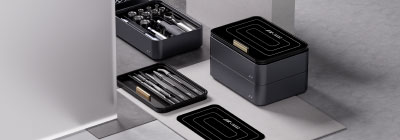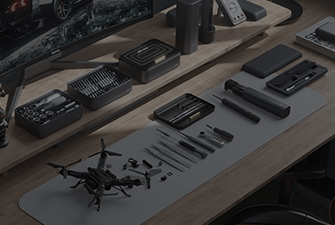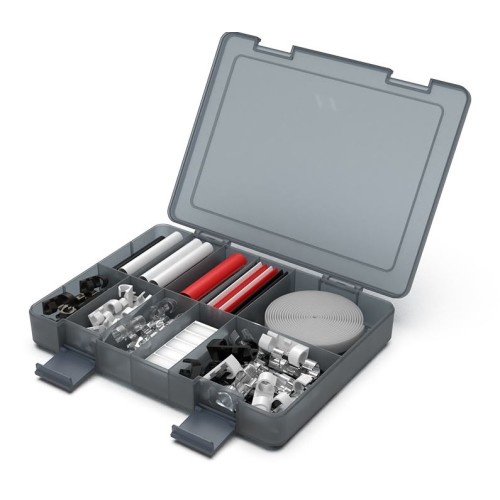
A properly stocked toolbox forms a craftsman's chief possession for everyday jobs like gauging boards and tightening screws precisely. This resource gives insight to opt for correct tools and apply them successfully.
- Start your setup by compiling vital hand tools—hammer, screwdrivers, wrenches, pliers, saws and measuring tapes.
- Master the use and intended functions of each tool for distinct tasks.
- Polish your approach by working on hands-on tasks and boosting complexity over time.
Note that dedicating time to hand tool mastery improves your abilities. With appropriate understanding, tools serve as skill extensions enabling precise work on tough projects.
Take Control of Your Tasks with Power Tools
Ready to transform your projects? Delve into the amazing world of power tools, where precision and efficiency converge. These critical tools can upgrade your craft for both experienced workers and hobbyists. From potent drills to specialized saws, power tools deliver diverse capabilities for building projects.
- Leverage cordless impact drivers to streamline fastening and demolition jobs.
- Master reciprocating saws for quick and clean cuts through wood, metal, and more.
- Enhance woodworking using robust planers and jointers to attain precise smooth finishes.
Leverage advantages of power tools to speed project timelines and achieve notable results.
Precision Workflows Simplified
Where accuracy is paramount, choosing ideal measuring tools has major impact. From common tapes to advanced digital calipers, measurement aids support accurate execution of designs. Whether skilled craftsman or curious beginner, mastering measurement devices expands capabilities.
- Check out the range of measuring devices meant to address varied measurement needs.
- Learn the specific uses and benefits of each type of tool.
- Develop your skills in accurate measurement and application.
Complete Sets for All Tasks
From pros to hobbyists, a correct toolkit makes all the difference in projects. From tightening screws to assembling furniture, the perfect set can make all the difference in ensuring accuracy, efficiency, and safety. Base your toolkit selection on the nature of jobs you do often.
Is a versatile full set necessary or will a niche toolkit serve you well? Once you've determined your requirements, explore different brands and models to compare features, quality, and price. Make sure to read peer reviews online to gather useful perspectives before buying.
Through research and planning you'll identify the ideal kit to complete projects confidently.
Hand Tool Maintenance: Keeping Your Gear in Top Shape
Maintaining proper care of hand tools matters for every woodworker or DIYer. Ignoring maintenance causes blunt blades, damaged components and frustrating outcomes. Consistent upkeep keeps tools performing well and extends their service life. Always clean and clear tools of debris following use to prevent damage. Place tools in dry, protected storage to inhibit rust and corrosion.
- Sharpen cutting tools consistently with a stone or fine file.
- Lubricate mechanisms with fitting oil to reduce friction and prolong service life.
- Inspect handles for cracks or damage and replace them as needed.

Applying these simple maintenance practices improves tool durability and your overall work experience.
Basic Hand Tools Every Home Workshop Needs
A stocked home workshop offers a great space for hobbyists and DIY practitioners. Although specialized gear benefits projects, foundational hand tools are indispensable. Essential picks include a dependable hammer, an adjustable wrench and a solid tape for accurate measuring. Include varied screwdriver sizes, pliers for gripping and a utility blade for cutting work. A dependable saw offers accurate cuts and a level ensures aligned, even outcomes.
- Crucial Hand Tools for a Personal Workshop

Your Guide to Safe Power Tool Use
Power tools are powerful devices that provide high power and efficient operation. However these devices necessitate comprehensive knowledge of protective protocols. Failing to take precautions may cause severe harm. This handbook clarifies safety for power tool use and provides practices to work safely.
Initiate by becoming acquainted with tools, read instructions thoroughly and learn safety elements. Always wear appropriate personal protective equipment (PPE), including safety glasses, hearing protection, and gloves. Keep tools maintained consistently to ensure they function correctly.
Safety should always be the leading consideration in any work area. Observing these practices enables safe, confident operation of power tools.
Choosing Measuring Instruments for Precision
In obtaining accurate measurements, the measuring tools you opt for play a critical role. Various measuring instruments are on the market, each suited to specific functions. Knowing tool characteristics matters when making informed selections. Consider elements like accuracy, resolution and scale when picking the appropriate measuring tool.
- For length measuring tasks, a tape measure or ruler is generally used.
- Use a protractor for indispensable angle measurements.
- Analog or digital calipers suit accurate small-dimension measuring.
Choosing measurement tools prudently yields repeatable, reliable accuracy.
Picking the Optimal Tool Set

Searching for the right tool set may be exciting and somewhat intimidating. An extensive range of choices can produce selection fatigue. This complete guide supplies the knowledge to determine the best set for requirements.
First, evaluate the kinds of projects you will commonly perform. Are you a seasoned professional or a beginner? Clearly defining your goals will help narrow down your choices.
- Utilize both categories of tools to achieve efficient, successful project results Combine hand and power tools strategically for successful and efficient project completion Don't be afraid to combine blend utilize both power and hand tools for a successful Hand Tools productive efficient outcome
- Emphasize primary essential items
- A dependable hammer and optional mallet or sledgehammer
- Screwdriver, wrench and plier sets: a versatile assortment is vital
- Measuring tools including tape and ruler
- Alignment implements: level, plumb bob and transit
Reflect on construction materials, price limits and brand trustworthiness. Note that spending on sturdy tools pays off over time.
DIY Tools: Simplicity and Effectiveness
Beginning your initial DIY project can appear overwhelming. But fear not! With the right tools and a little knowledge, you can turn even the most toughest tasks into manageable achievements. Start by getting to know and learning about each tool. Peruse manuals thoroughly and practice techniques in a safe space. Safety should remain your topmost concern at all times. Use protective equipment such as goggles, gloves and ear protection to guard against hazards.
For tool purchases, quality and robustness should guide decisions. Invest in reliable dependable trustworthy brands that will stand the test of time last for years serve you well.
Seek advice from experienced DIYers or store professionals when unsure. Store pros and experienced DIYers can share practical suggestions and insights for picking ideal tools.
- Remember, a sharp tool is a safe tool.
- Store tools correctly to maintain condition and prevent loss.
- Attempt varied DIY tasks to expand competence and creativity
Selecting Between Power and Hand Tools: Usage Guide
When working on tasks, choosing power vs hand tools often proves challenging. While powerful power tools maximize speed and output, classic hand tools are indispensable for precise and minor work. This summary aids in selecting the most fitting tool option for the work required.
- Hand tools are well-suited for fine detail work, careful assembly and delicate repairs. They deliver improved handling and are typically more cost-effective and affordable.
- Power tools shine when you need to complete finish accomplish tasks quickly and efficiently, like cutting sawing slicing through wood, drilling boring penetrating holes, or sanding large surfaces. They considerably lessen effort and speed up task completion.
Finally, whether to use power or hand tools is determined by the project, your expertise and finances. Blend both tool types where appropriate to maximize productivity and precision.
